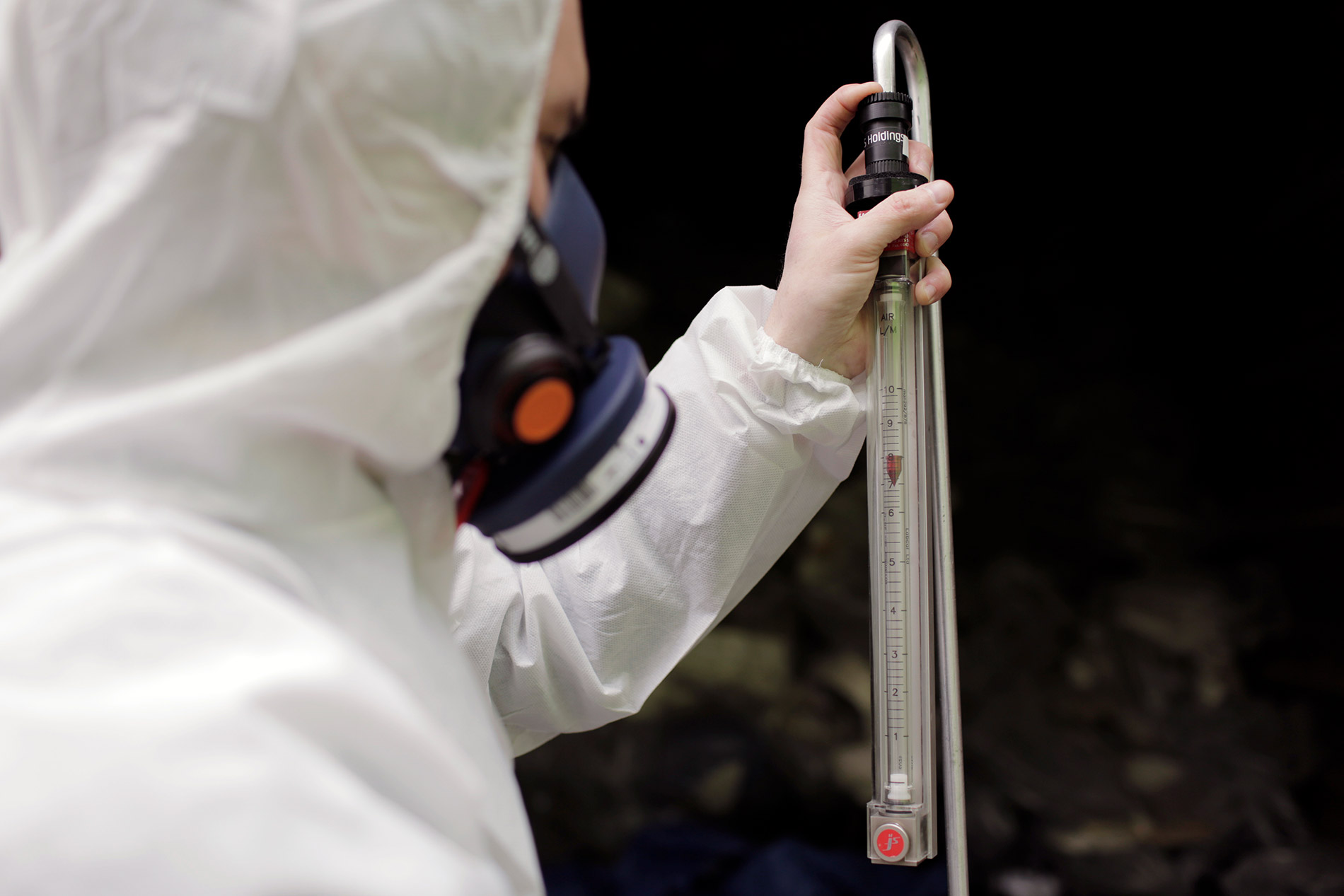Asbestos Air Testing
Asbestos air monitoring is an important process that takes place to determine airborne concentration of asbestos fibres following removal works or if asbestos has been damaged. The process provides proof that an area is safe for occupation or otherwise.
If any asbestos in your building is still intact it is completely safe but should be monitored on a regular basis to ensure it has not deteriorated or become damaged. but left alone. If you suspect that asbestos might be in a hazardous condition you should contact UKAS accredited asbestos air monitoring professionals to determine what remediation measures are required.
Our experts at Casa Environmental Services have put together this guide to run you through the basics of asbestos air testing ,how tests are done and when to seek help.
How Does Asbestos Get into The Air?
The most common way for asbestos to enter the body is through breathing. This is because tiny fibres are released when asbestos is damaged. These fibres, if inhaled or ingested, can have serious health implications.
Asbestos can be damaged in a variety of ways. Most commonly through renovation or by accident. Friable asbestos such as thermal insulation, sprayed coatings and insulation boards crumble easily. These types of material are far more likely to suffer damage over non-friable asbestos such as floor tiles or cement based products.
Once released fibres can remain airborne and respirable for quite long periods of time. Once settled these fibres can easily become airborne again as a result of air movement or mechanical disturbance and can therefore remain dangerous for extended periods of time.
What are the Different Types of Asbestos Air Monitoring?
There are five different types of tests that are undertaken;
Background Monitoring
This is undertaken to establish the respirable fibre concentrations prior to any activity which may lead to airborne asbestos contamination, to ensure that the risk is not being increased as a result of the activity. If fibre levels are found to be elevated, prior to asbestos works, consideration should be given to pre cleaning or extending the scope of works. If the contamination is not deemed to be asbestos, this should be taken into consideration when assessing future air monitoring results, such as leak tests. This type of test can also be carried out to check for airborne fibres in situations where it is suspected that asbestos fibres may have been released e.g. by accidental damage or inadvertent disturbance of asbestos materials.
Leak Monitoring
This is performed outside the enclosure whilst asbestos work is in progress to check that the environmental control systems are adequate. It is also used to verify that the works are properly contained and that asbestos fibres are not being released into adjacent areas. This is of paramount importance if the adjacent areas are occupied during the works.
Reassurance Monitoring
This is monitoring which is undertaken following work on or near asbestos to confirm that the airborne asbestos fibre levels are less than 0.01 f/cm3 , for example, as part of the 4th stage of the ‘4-stage clearance process’
4-Stage Clearance Monitoring
The four-stage clearance test is held to prove that an area is clear of asbestos and safe to enter. The four stages are:
- Initial check of site and job
- Thorough inspection of containment enclosure
- Air monitoring
- Final assessment and dismantling
The Air Test forms part 3 of the ‘4-stage clearance process’ and requires air monitoring in a cleaned and visually examined enclosure on completion of asbestos works. This type of test is conducted in conjunction with an air disturbance using a brush or broom. This is to check that the airborne fibre levels in the asbestos work area are below the clearance level indicator (the limit of quantification 0.01 f/cm3 ) prior to removal of the asbestos work enclosure and reoccupation of the area
Personal Monitoring
Personal sampling results should be used as a major indicator of performance for licensed contractors. Personal sampling is carried out for a number of reasons:
- By comparison against past records in similar circumstances, sampling results can give assurance that the control measures being used are effective in minimising exposure to the lowest level reasonably practicable. This will also verify that the protection factor afforded by selected RPE is adequate for the asbestos fibre levels to which workers will be exposed.
- Results are essential to provide underpinning evidence for exposure record assumptions
- In general, results provide information to be considered when planning future assessments and planning. Results need to be reviewed on the level of both individuals and teams to ensure that work methods are being carried out effectively.
How to Respond to Asbestos Disturbance
If asbestos has been disturbed the area should be sealed off and vacated immediately and access restricted to anyone not wearing suitable Respiratory Protective Equipment and Personal Protective Equipment. In most cases the services of an analytical company should be sought to assess the situation and advise upon remedial action necessary.
UKAS Accredited Asbestos Air Monitoring with Casa Environmental Services
Companies undertaking Air Monitoring Tests must be accredited by UKAS to ISO/ EIC 17025. In addition analysts carrying out Asbestos Testing must be qualified to British Occupational Hygiene Society P403 and P404 standard. It is important to when employing the services of an analytical company to ensure they are fully qualified and accredited.
Casa Environmental Services are fully qualified and experienced to carry out asbestos surveys , air monitoring , consultancy and training.. We have many years of experience in the industry and pride ourselves on the services we provide.
Get in touch with us today by clicking here. Our friendly advisors are on hand to offer advice and offer solutions for any asbestos related issues.




